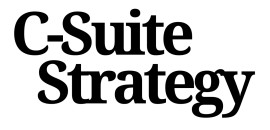
Understanding the core differences between demand planning and supply planning
Clarifying the Foundations of Demand and Supply Planning
For CEOs, understanding the distinction between demand planning and supply planning is fundamental to effective business planning and chain management. While both are critical to meeting customer demand and optimizing resources, they serve different purposes and require unique approaches.
- Demand planning focuses on forecasting customer demand using historical sales data, market trends, and input from sales and marketing teams. The goal is to anticipate what products customers will want, in what quantities, and when.
- Supply planning is about ensuring the business can meet that demand by managing inventory, production schedules, raw materials, and supply chain logistics. It translates demand forecasts into actionable plans for procurement, manufacturing, and distribution.
Demand planners rely on data-driven forecasting methods to minimize uncertainty and align forecasts with business objectives. On the other hand, supply planners work to balance stock levels, cash flow, and production capacity, making sure resources are allocated efficiently to meet demand without overstocking or underdelivering.
When these two planning processes operate in silos, businesses risk misaligned forecasts, excess inventory, or missed sales opportunities. Integrated business planning brings demand and supply planning together, enabling a more agile response to market changes and customer needs.
For a deeper dive into how to structure executive briefings that support strategic planning, explore this guide to executive briefings for strategic success.
Why alignment between demand and supply planning matters for company strategy
Why strategic alignment is a CEO’s lever for value creation
Balancing demand planning and supply planning is not just an operational concern—it is a strategic imperative for CEOs. When these two planning disciplines are misaligned, the business risks either excess inventory tying up cash flow or missed sales opportunities due to stockouts. The ability to synchronize demand forecasts with supply capabilities directly impacts the company’s ability to meet customer demand, optimize resources, and drive profitability. The core of this alignment lies in integrating data from demand forecasting, sales data, and historical sales with real-time supply chain insights. This ensures that production, inventory management, and procurement are all working from the same set of assumptions and market signals. When demand planners and supply planners collaborate, businesses can:- Reduce excess inventory and avoid costly write-downs
- Improve cash flow by aligning stock levels with actual market demand
- Enhance customer satisfaction by reliably meeting demand
- Respond more quickly to market changes and disruptions
Key challenges CEOs face in integrating demand and supply planning
Common Roadblocks in Unifying Demand and Supply Planning
For CEOs, integrating demand planning and supply planning is rarely straightforward. The challenges are not just technical—they are deeply rooted in organizational structure, data quality, and cultural silos. Here are some of the most pressing obstacles businesses face:- Data fragmentation: Demand planners and supply planners often rely on different data sources. Disconnected sales data, historical sales, and production forecasts can lead to inconsistent planning. Without a unified view, it’s tough to align inventory management with real customer demand.
- Forecasting complexity: Demand forecasting is inherently uncertain. Market shifts, changing customer preferences, and unpredictable supply chain disruptions make it difficult to create accurate forecasts. This uncertainty can cause either excess stock levels or missed sales opportunities.
- Organizational silos: Many businesses still operate with demand and supply planning teams working in isolation. This lack of cross-functional collaboration leads to misaligned objectives and inefficient use of resources, impacting both cash flow and the ability to meet demand.
- Technology gaps: Legacy systems and manual processes hinder real-time data sharing and integrated business planning. Without the right tools, it’s challenging to synchronize demand and supply plans or to respond quickly to changes in the market.
- Resource constraints: Limited resources—whether raw materials, production capacity, or skilled demand planners—can restrict a company’s ability to adapt its supply chain to shifting forecasts and customer demand.
Strategic Solutions for CEOs
Addressing these challenges requires more than just new software. It demands a shift in mindset and a commitment to integrated business planning. CEOs can drive progress by:- Championing a culture of collaboration between demand and supply planning teams
- Investing in data integration and advanced forecasting tools
- Aligning incentives and KPIs across functions to support shared business goals
Leveraging technology to bridge the gap
Technology as a Catalyst for Planning Integration
Modern businesses face increasing complexity in aligning demand planning and supply planning. Technology has become a critical enabler for bridging the gap between these functions. By leveraging advanced tools, organizations can synchronize their supply chain, improve forecasting accuracy, and optimize inventory management.
- Data-driven forecasting: Advanced analytics platforms use historical sales data, market trends, and real-time customer demand signals to generate more accurate demand forecasts. This helps demand planners and supply planners create plans that better reflect actual market needs.
- Integrated business planning systems: Solutions that connect sales, production, and inventory management allow for seamless communication across departments. This integration ensures that supply planning can quickly adapt to changes in demand, reducing the risk of stockouts or excess inventory.
- Inventory visibility: Cloud-based inventory management systems provide real-time insights into stock levels, raw materials, and production resources. This transparency supports better decision-making and helps businesses meet demand efficiently.
- Scenario planning and simulations: Technology enables companies to run simulations based on different demand and supply scenarios. This empowers management to anticipate disruptions, optimize cash flow, and allocate resources more effectively.
For CEOs, investing in the right technology is not just about automation—it is about enabling a culture of agility and responsiveness. When demand planners and supply planners have access to shared data and integrated business tools, they can collaborate more effectively to meet customer expectations and drive business growth.
| Technology | Key Benefit | Impact on Planning |
|---|---|---|
| Advanced Analytics | Improved forecasting accuracy | Aligns demand and supply forecasts |
| Integrated Planning Platforms | Cross-functional collaboration | Streamlines business planning |
| Inventory Management Systems | Real-time stock visibility | Optimizes inventory and cash flow |
| Scenario Simulation Tools | Risk mitigation | Prepares for demand-supply fluctuations |
Ultimately, technology empowers businesses to close the gap between planning demand and planning supply, ensuring that production, inventory, and sales are aligned to meet market needs and customer expectations.
Building cross-functional teams for effective planning
Creating a Culture of Collaboration
Bringing together demand planning and supply planning requires more than just aligning processes—it demands a shift in company culture. CEOs play a pivotal role in fostering collaboration across business units. When sales, production, inventory management, and supply chain teams work together, businesses can respond faster to market changes and customer demand. This cross-functional approach helps break down silos, ensuring that demand forecasts and supply plans are shared and understood by all stakeholders.
Key Roles and Responsibilities
Effective planning depends on clear roles. Demand planners focus on analyzing historical sales data, market trends, and customer insights to create accurate forecasts. Supply planners, on the other hand, translate these forecasts into actionable plans for production, inventory, and raw materials procurement. By defining these responsibilities, companies can better manage resources and meet demand without overstocking or risking stockouts.
- Demand planners: Analyze sales data, forecast demand, and communicate insights to the business.
- Supply planners: Develop supply plans, manage inventory, and coordinate with production to ensure resources are available.
- Integrated business planning teams: Bring together demand and supply perspectives to create a unified plan that supports company strategy.
Enabling Seamless Communication
Regular meetings and transparent data sharing are essential. Integrated business planning sessions allow teams to review forecasts, adjust plans, and address challenges in real time. Open communication ensures that changes in customer demand or supply chain disruptions are quickly reflected in both demand and supply planning processes.
Empowering Teams with Data
Access to reliable data is a game-changer. By investing in advanced forecasting tools and analytics, CEOs can empower teams to make informed decisions. This not only improves demand forecasting accuracy but also enhances inventory management and cash flow. When teams have the right data, they can anticipate market shifts and adjust production and inventory levels to meet demand efficiently.
Continuous Improvement and Learning
Building effective cross-functional teams is an ongoing process. Encourage a mindset of continuous improvement by reviewing key performance indicators and learning from past planning cycles. This approach helps businesses adapt to changing market conditions and strengthens the link between demand and supply planning for long-term success.
Measuring success: KPIs for demand and supply planning integration
Translating Integration into Measurable Outcomes
For CEOs, the real value of integrating demand planning and supply planning comes from tracking the right performance indicators. The goal is to ensure that your business planning efforts are not only aligned but also driving tangible improvements across the supply chain. Key performance indicators (KPIs) help you monitor how well your teams are forecasting demand, managing inventory, and meeting customer demand. These metrics also reveal how efficiently resources are being used to meet market needs and support cash flow.- Forecast Accuracy: Measures how closely demand forecasts match actual sales data. High accuracy means your demand planners are effectively using historical sales and market data to anticipate customer needs.
- Inventory Turnover: Indicates how often inventory is sold and replaced over a period. This KPI highlights the balance between having enough stock to meet demand and avoiding excess that ties up cash flow.
- Service Level: Tracks the percentage of customer orders fulfilled on time and in full. High service levels show that your supply planning and inventory management are aligned to meet customer expectations.
- Stockouts and Overstocks: Monitoring these events helps identify gaps in planning supply and demand. Reducing both is key to efficient chain management and customer satisfaction.
- Production Plan Adherence: Evaluates how closely actual production matches the planned schedule. This reflects the effectiveness of integrated business planning and the ability to respond to demand fluctuations.
- Supply Chain Cycle Time: Measures the time taken from raw materials procurement to product delivery. Shorter cycle times indicate a responsive and agile supply chain.
Building a KPI Dashboard for Leadership
A well-designed dashboard brings together these KPIs, offering a real-time view of how demand and supply planning are performing. For CEOs, this means:- Quickly identifying trends or issues in demand forecasting and inventory management
- Making informed decisions about resource allocation and production planning
- Ensuring that business planning aligns with market realities and customer demand














